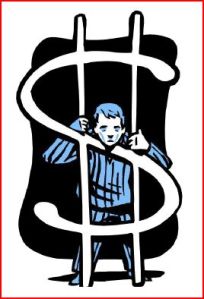By Katie Meta
1. Intro and motivation
The Occupy movement began in New York City’s Zucotti Park in September 2011, as a protest against economic inequality and specifically against the banks of Wall Street. Occupy quickly spread, and around the world camps were set up in public spaces, protesting against economic inequality, and organising themselves non-hierarchically, with decisions made in leaderless General Assemblies. The occupations are notable for their lack of a platform or list of demands, as shown in this statement from Occupy Oakland:
To the Politicians and the 1%: This occupation is its own demand. Since we don’t need permission to claim what is already ours, we do not have a list of demands to give you. There is no specific thing you can do in order to make us “go away”. And the last thing we want is for you to preserve your power, to reinforce your role as the ruling classes in our society.
What does it mean to say that “This occupation is its own demand”? I would argue that this expresses a desire for Participatory Democracy; a political system characterised by a lack of hierarchy, in which people participate directly in making decisions that affect them. This is in contrast to Representative Democracy, in which people vote for their rulers once every four or five years but apart from that have few opportunities to participate in decision-making. At least for some participants, the purpose of Occupy is not to influence government, but to replace it.
However the form of participatory democracy practised within the Occupy movement is far from perfect, and despite the best of intentions what happens in General Assemblies falls short of full and equal democratic participation for all. Many people are drawn into this movement by the promise of openness and equal participation, and so when these promises are not realised, people drift away.
In this article I’m going to look at how participatory democracy is practised within Occupy and related movements, show some of the problems that often come up, and suggest some improvements. I’m also going to talk more generally about how Participatory Democracy can be used in other types of organisations. Finally I’ll argue that Participatory Democracy isn’t just something that just happens in meetings, and that is requires a cultural shift in the way we think and related to each-other. This shift requires hard work, but in my opinion it’s definitely achievable.
I’m not involved in the Occupy movement. However I was involved for several years in the UK Camp for Climate Action, which had a similar organisational structure. I’m going to start by describing this organisational structure in a somewhat simplified and idealised way – every group is different so this won’t perfectly match any particular group.
read more »



